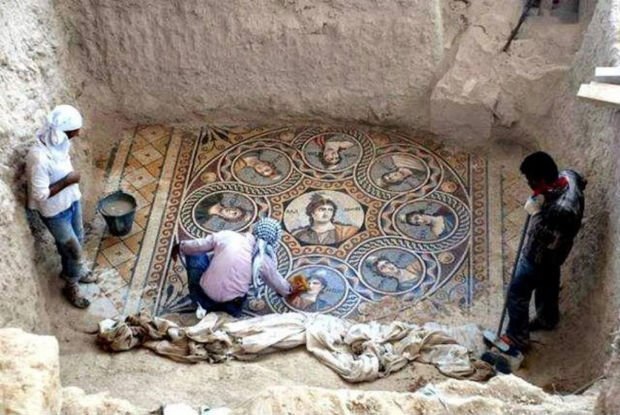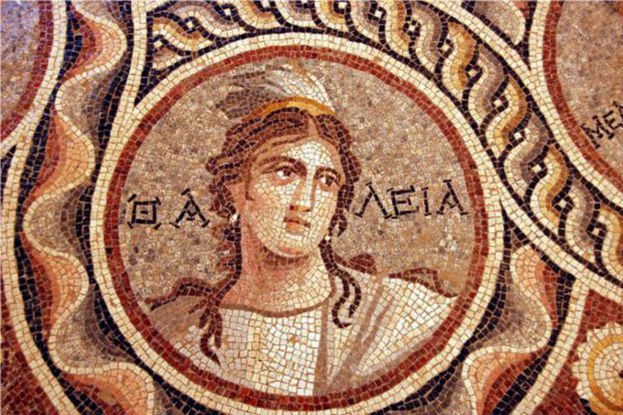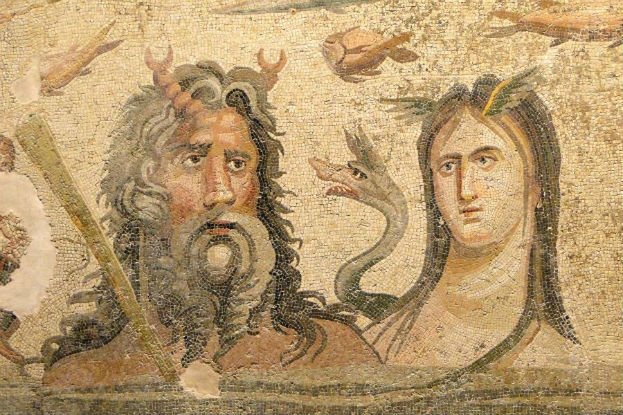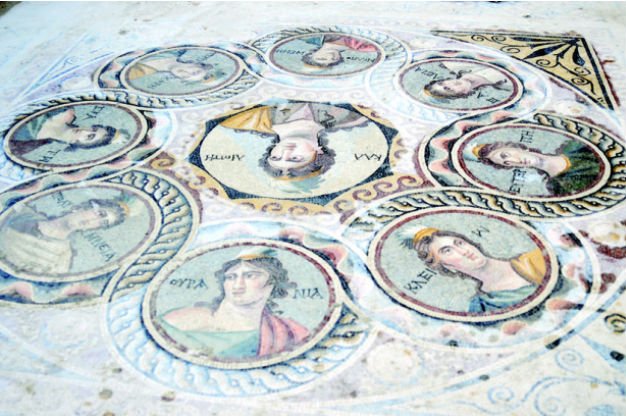Battle of Civitate proved to be a turning point in the fortunes of the Normans in Italy, who were able to win a victory despite their differences even among themselves, and solidifying their legitimacy in the process. Not only that, it was the first major victory for Robert Guiscard, who would eventually rise to prominence as the leader of the Normans in the South. In terms of its implications, the Battle of Civitate had the same long-term political ramifications as had the Battle of Hastings in England and Northern Europe, a reorientation of power and influence into a Latin-Christendom world.
Five Incredible Treasures That Were Found Recently
The world is so full of lost treasures that new discoveries are being found every year. Today we look at five recent discoveries including over 650 ancient Roman silver coins, textile dyed with royal purple from 3,000 years ago, famous pirate Captain Every’s lost treasure, one of the largest caches of ancient Roman gold coins ever found, and the San Jose Galleon, the most valuable sunken wreck of all time!
Is This A Theropod? A Sauropod? A Third Thing?
In today’s video we will investigate how the therizinosaurs lived and evolved ended up being just as weird as their mixed-up anatomy. Enjoy!
Discoveries That Could Change History
In the video below we will be exploring discoveries that could change History. Enjoy!
The Food of Ancient Greece
In this video, we take a look at the food that was eaten by the Ancient Greeks from the age of Homer to the age of Alexander. Enjoy!
The Worlds Oldest Buildings That Are Still in Use
Explore the world's oldest structures still in use, including the Tower of Hercules, Colosseum, Luxor Temple, Hōryū-ji Temple, and 9,000-year-old Sassi di Matera. Discover the fascinating history, rich cultural significance, and modern-day use of these ancient buildings.
Woman Finds Something Shocking in the Safe She Inherited From Her Aunt
Moving to a new house can be upsetting yet exciting at the same time. It’s unfortunate that you must leave behind the place you once considered home, but it’s also nice to look forward to a new beginning. These people began their new lives in their new houses expecting nothing out of the ordinary, but instead, they found that amazing things were hidden inside their new homes.
Let’s look at some of the strangest things discovered inside people’s residences.
From a 19th-century Victorian kitchen to the disappointment room, here are 15 crazy things found in people’s homes!
12 Most Amazing Ancient Finds
The people of the past left behind some incredible things for us to find and admire. All we have to do is find them so we can admire them! Often, that involves digging into the ground. The profession of archaeology is a rewarding one, and some of its richest and most fascinating rewards are contained within this video!
The Most Mysterious People In History
In the video below we will be talking about the most mysterious people in History. Enjoy!
Did Giants Really Exist? Here Is The Stunning Proof That Separates Fact From Fiction
In the 1930s, a collection of giant bones was discovered on Mount Carmel in Israel, but they have since disappeared and attention was directed towards new discoveries of Neanderthal bones. It is possible that authorities did not want to acknowledge that the bones could have belonged to the Nephilim or one of their descendants. Despite this, the Bible lists 22 giants by name, including Arba, Og, Bielesath, Ogias, Gog, Magog, Gogmagog, etc. Most of these giants were rulers and kings.
Daily Life of the Ancient Egyptians
In this video we will go through history of ancient Egypt, as we discuss how the Ancient Egyptians lived their daily lives. Enjoy!
Three Stunning Ancient Greek Mosaics Unearthed on The Syrian Border
Three new mosaics have been excavated by archaeologists in Turkey's southern province of Gaziantep, as part of a seven-year expedition to discover the secrets of Zeugma - an ancient Greek city founded in 300 BC.
The excavation of Zeugma, being carried out by 25 students led by archaeologist Kutalmış Görkay from Ankara University in Turkey, begin in 2007 in an effort to rescue the ancient treasures from the waters of a flooded dam built on the Euphrates River about a kilometre away. "Of particular concern was the removal of Zeugma's mosaics, some of the most extraordinary examples to survive from the ancient world," Matthew Brunwasser writes at Archaeology.org.
Around 80 percent of the city has been underwater for over a decade, but the team is continuing to unearth some incredible artefacts to help them piece together what life was like in one of the most important trade centres of the Eastern Roman Empire. According to Jenny Zhang at My Modern Met, "Zeugma" means "bridge" or "crossing" in ancient Greek.
Founded by Seleucus I Nicator ("the Victor"), one of Alexander the Great's generals, the city of Zeugma was home to 80,000 citizens at its peak. With the fall of the Roman Empire, so too did Zeugma fade into obscurity, after being destroyed by Persian forces in AD 253.
Most recently, Görkay and has team have been focussing on an enormous building, called Muzalar House, thought to have been inhabited by one of the city's most elite families. Having found three beautifully coloured mosaics inside, Görkay told Brunwasser that these elaborate displays would have decorated the walls of the home with images that highlighted what their owner was most interested in - or what they wanted to be seen as being most interested in.
"They were a product of the patron's imagination. It wasn't like simply choosing from a catalogue. They thought of specific scenes in order to make a specific impression," he said. "For example, if you were of the intellectual level to discuss literature, then you might select a scene like the three muses. They are also a personification of good times. When people drank near this mosaic, the muses were always there, accompanying them for atmosphere."
The residents of Muzalar House evidently liked having a good time, because one of the three newly discovered mosaics depicts nine rather handsome-faced muses. The centre portrait has been identified as Muse Calliope, and she is surrounded by portraits of her eight sisters. "According to ancient Greek poet Isiodos, Calliope was the greatest and finest of the nine Muses, the protector of Epic poetry and arts," says Zhang at My Modern Met.
The second mosaic unearthed in Turkey this month depicts Oceanus and Tethys - the former believed by the ancient Greeks and Romans to be the divine personification of the sea, and the latter his sister, whose children were the ocean nymphs, also known as the 3,000 Oceanids. The team suggests that the special glass mosaic pieces used in this piece were produced for it alone.
The third mosaic is slightly smaller than the other two, and depicts ΘΑΛΕΙΑ - one of the nine muses, who was the daughter of Thalia and Zeus.
Archaeologists typically prefer to leave excavated mosaics in situ, as shifting them can be risky, but following a robbery at the site a few years ago, they are now working on relocating them to a local museum.
"From now on, we will work on restoration and conservation. We plan to establish a temporary roof for long-term protection," Görkay told the Hurriyet Daily News. "We estimate that the ancient city has 2,000 to 3,000 houses. Twenty-five of them remain under water. Excavations will be finished in the Muzalar House next year."
Craziest Stories In Greek Mythology!
Check out these top stories in greek mythology! This top 10 list of tales from ancient greece explain everything from powerful greek gods to facts and myths and mythical creatures!
Ancient underground complex Unearthed, while repairing this toilet in Italy
When An Italian Guy Went To Repair His Toilet, He Unearthed An Ancient Underground Complex.
An Italian man’s dream to open a modest restaurant became an archaeological obsession when he broke ground in order to repair a faulty toilet. The underground world filled with centuries of history he found beneath his building would dominate his life for more than a decade.
In 2000, Luciano Faggiano faced plumbing and sewage issues on the property he had purchased in order to start a trattoria, a casual eating establishment, in Lecce, Italy. Figuring it would be a quick fix, he opted to find and repair the trouble himself, with the help of his two older sons. Digging beneath the building, the family soon discovered a subterranean world, “tracing back before the birth of Jesus: a Messapian tomb, a Roman granary, a Franciscan chapel and even etchings from the Knights Templar. His trattoria instead became a museum, where relics still turn up today.
The Evolution of Komodo Dragons
Dutch sailors heading back from the more remote islands of Indonesia would tell stories of sightings of dragons, sometimes fire breathing giant beasts. When the islands were studied they were found to not be dragons but a new undiscovered animal, a mysterious giant lizard. They may not be dragons but they definitely look like they are from another time and differ from most apex predators of other ecosystems around the world. So how did a large ancient lizard come to rule over these islands?
These Incredible Warbows were Preserved Inside a Tudor Shipwreck
In this video we will be exploring how a Tudor shipwreck has shaped our understanding of archery in the later medieval period. Raised from the bottom of the English Channel in 1982, the Mary Rose was a carrack-type warship in the English fleet during the reign of King Henry VIII. When it sank in battle against the French in 1545, the Mary Rose took down hundreds of seamen and soldiers with their weapons. The incredible archaeological remains include dozens of perfectly preserved longbows, showing these weapons were still used even as gunpowder became prevalent on the battlefield.
Ancient Egypt: What Everyday Life Was Actually Like
From drinking beer to practicing dentistry, there's quite a few strange facts that might surprise you about what ancient Egyptian civilization was actually like. Today we're taking a deeper look into what life was like amongst the pyramids.
What Life Was Really Like for the Average Spartan
Sparta had one of the most respected and fiercest fighting forces of their era. Daily life in ancient Sparta supported the military machine to the point where all other aspects of life revolved around it. From the time a Spartan was born to their death, they served the state and its armed forces. Spartans had to be perfect, both in society and on the battlefield. Their civilization worked as a military unit, preparing both men and women to be their best for whatever challenges they faced.
This Provocative Painting Went Too Far
This painting is called In a Roman Osteria by Danish artist Carl Bloch. It is a late 19th century painting that Bloch created for his friend, Moritz Melchior. It is full of… interesting details and leaves us wondering what we did to make this group of people look at us like that. Watch the video below to find out more!
A 1700 Year Old Sock Was Unearthed In A Dump, And Experts Are Unraveling Its Colorful Secrets
Ancient civilizations in Egypt left behind countless treasures, but an early-20th-century dig in Antinoopolis uncovered something uniquely incredible: a sock. Granted, such a common accessory might not seem to represent an exciting discovery. But this one was found to be 1700 years old, and its fibers have an amazing story to tell.










